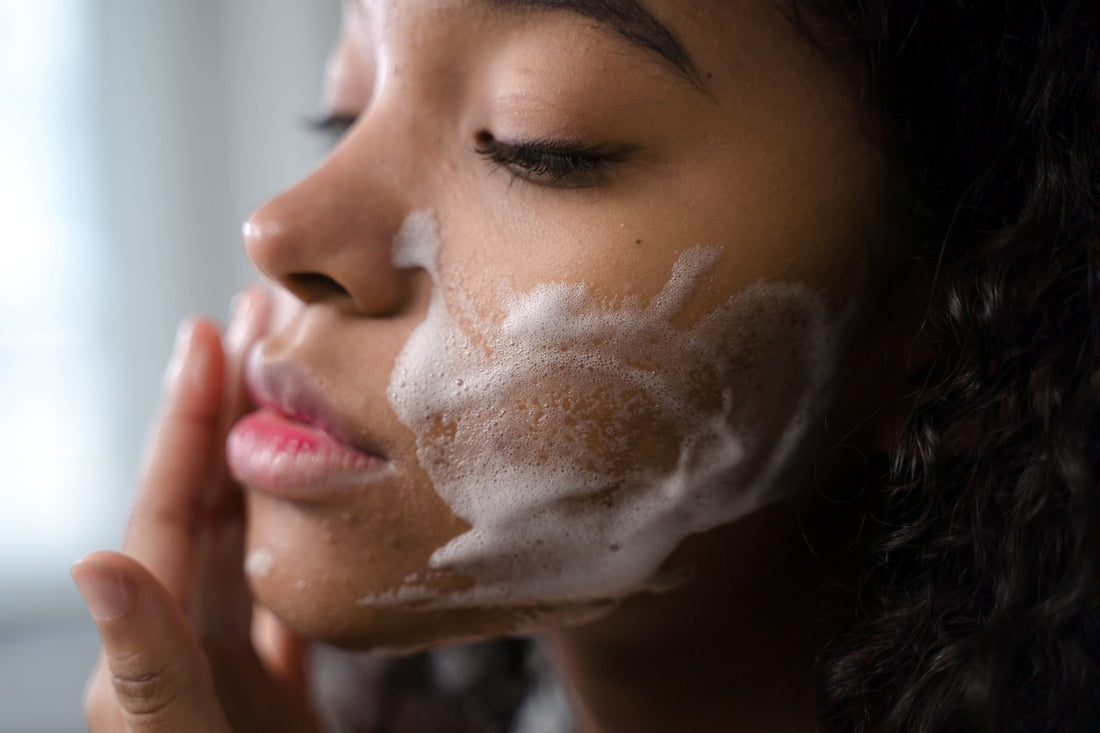To get tanner in the sun, expose your skin to sunlight gradually and use a broad-spectrum sunscreen. Opt for sunbathing during safer sun hours before 10 a.m. or after 4 p.m. to reduce the risk of burning.
As the sunnier days approach, the desire to ‘Get Tanner in the Sun’ becomes a shared quest. Patience and safety take center stage on this sun-kissed journey. Your skin, orchestrating its melanin production for that beautiful hue, deserves time—rushing invites the unwelcome guest, sunburn. Begin with brief sun exposures, gradually extending them. Shield with SPF 30, balancing protection, and the glow you crave. Don’t forget to quench your skin’s thirst—hydration ensures an even, healthy tan. Follow these steps for a radiant tan while treating your skin with the care it deserves.
Table of Contents
Understanding The Science Of Tanning
Tanning might seem as simple as spending a few hours under the sun, but there’s a complex process at work beneath your skin’s surface. To achieve a healthy and even tan, understanding the science behind it is crucial. Let’s delve into the roles of melanin and UV exposure, two essential components in the transformative journey of tanning.
Role Of Melanin In Tanning
- Darker Skin Tones: People with naturally dark skin have more melanin, which provides greater natural protection against the harmful effects of UV rays.
- Sunlight Exposure: Increasing your exposure to the sun will boost melanin production, which can cause the skin to darken or tan.
UV Exposure And Tanning Process
| UV Ray Type | Effect on Skin |
|---|---|
| UVA | It penetrates the skin more deeply and can contribute to premature aging. |
| UVB | It affects the outer layer of the skin and is primarily responsible for sunburn and skin reddening. |
Preparing Your Skin For Sun Exposure
Chasing that ‘Get Tanner in the Sun’ dream? Achieving the coveted sun-kissed tan is a summer ritual, but it demands a thoughtful approach. Prep is the secret sauce for an even, long-lasting glow while keeping skin damage at bay. Dive into a few pre-tan rituals, and you’ll unlock the path to a healthier and more radiant tan. Let’s explore the essential steps that set the stage for safely embracing a beautiful bronze.
Importance of ExfoliationImportance Of Exfoliation
- Removal of Dead Skin: Exfoliation clears away dead skin cells, promoting an even and streak-free tan.
- Better Skin Health: This process unclogs pores, preventing acne and other skin issues.
- Enhanced Tan Duration: By removing the older cells, your tan will adhere to newer cells and last longer.
For the best results, exfoliate with a gentle scrub 24 to 48 hours before sun exposure. Target the entire body, focusing on rough areas like knees and elbows to ensure smooth and even coverage.
Hydration and MoisturizationHydration And Moisturization
Healthy skin is well-hydrated skin. Keep your skin’s moisture balance in check!
- Internal Hydration: Drink plenty of water before and during sun exposure to replenish lost fluids.
- External Moisturization: Apply a hydrating moisturizer after exfoliation and before sunscreen. This helps fortify the skin’s natural barrier.
Moisturized skin not only tastes better but is also more resilient to the drying effects of the sun. Choose a moisturizer rich in antioxidants like Vitamin E for enhanced protection.
Sunscreen Selection and ApplicationSunscreen Selection And Application
Selecting the right sunscreen is a pivotal step in your pre-tan skincare routine. Here’s what to look for:
| Feature | Description |
|---|---|
| Broad-Spectrum | Provides protection against both UVA and UVB rays. |
| SPF Rating | Choose an SPF of 30 or higher for sufficient protection. |
| Water-Resistance | Ideal for long-sun exposure and swimming. |
Apply sunscreen 15 to 30 minutes before going outdoors to allow it to bind to the skin properly. Reapply every two hours or immediately after swimming or sweating. Cover all exposed areas, including often-missed spots like the tops of feet, ears, and the back of the neck.
Maximizing Tanning Potential Safely
To boost your sun tanning while ensuring safety, opt for gradual exposure and wear a broad-spectrum sunscreen. Embrace the sun’s warmth at peak efficiency times, but always prioritize skin protection to maintain health.
Optimal Sun Exposure Timing
Utilizing Reflective Surfaces
- Use a reflective towel or blanket. Position it under you while lying down to reflect rays onto your back.
- Choose your spot wisely. Whether it’s beside a pool or on the beach, your surrounding terrain can serve as a natural tanning booster.
Clothing Choices For Effective Tanning
| Clothing Type | Tanning Benefit | Protection Tip |
|---|---|---|
| Swimwear with smart cutouts | Even exposure to desired areas | Apply sunscreen on exposed and sensitive skin |
| Loose, light cover-ups | Allows UV penetration while airing out the skin | Opt for UPF-rated fabrics for intermittent protection |
| Wide-brimmed hats | Protects the face and neck | Choose a style that lets sunlight reach your shoulders |
Enhancing Your Tan Naturally
Welcome to the sun-drenched path of enhancing your tan naturally! Many desire that golden glow that comes from basking in the sun’s rays, and achieving it safely—as well as maintaining it—is a fine art. Let’s explore how a proper diet, boosting melanin with foods, and keeping hydrated can deepen your tan and give your skin that healthy, sun-kissed luster.
Diet And Its Impact On Tanning
- Carrots and sweet potatoes are beta-carotene powerhouses.
- Tomatoes and watermelons are loaded with lycopene, providing natural sun defense.
Boosting Melanin Production With Certain Foods
| Food | Nutrient | Role in Melanin Production |
|---|---|---|
| Egg whites | Tyrosine | Stimulates melanin |
| Almonds | Vitamin E | Protects skin from UV damage |
| Seafood | Omega-3 fatty acids | Reduces inflammation |
Hydration For Maintaining A Healthy Glow
- Drink at least 8 glasses of water daily to maintain optimal hydration.
- Include water-rich foods like cucumbers and berries in your snacks.
- Avoid alcohol and caffeine, as they can dehydrate your body.
After-sun Care And Maintenance
Effective after-sun care is crucial for enhancing and maintaining a longer-lasting tan. Opt for soothing moisturizers and hydration-rich formulas to replenish your skin and lock in that sun-kissed glow.
Soothing, Sun-exposed Skin
- Use lightweight, non-greasy moisturizers
- Opt for products with hyaluronic acid or glycerin
- Drink plenty of water to rehydrate from within
Prolonging And Preserving Your Tan
- Hydrate skin with moisturizers twice a day, morning and night
- Exfoliate gently once a week to remove dead skin cells
- Consume foods high in beta-carotene, such as carrots and sweet potatoes
Addressing Sun Damage And Preventing Peeling
| Skincare Ingredient | Benefit |
|---|---|
| Vitamin C | Combats free radical damage |
| Vitamin E | Supports skin repair |
| Omega-3 Fatty Acids | Strengthens skin barrier |
Safe Tanning For Different Skin Types
Safe tanning practices are crucial, regardless of skin type. Embrace gradual sun exposure and always apply a broad-spectrum sunscreen to aid in achieving a golden tan without compromising skin health.
Tailoring Sun Exposure Based On Skin Tone
Each skin type reacts differently to the sun’s rays, making it essential to adjust your tanning routine accordingly. Skin types, ranging from very fair to very dark, can be categorized using the Fitzpatrick scale. This system assists in gauging your skin’s response to UV radiation and the care it requires while basking in the sunlight.
Tips For Fair, Medium, And Dark Skin
- Limited Exposure: Start with 10–15 minutes of sun exposure to prevent burning.
- High SPF: Always use sunscreen with at least 30 SPF, and reapply every 2 hours.
- Gradual Tanning: Increase sun exposure time gradually, but sustain it under 30 minutes.
- Water Resistance: Opt for water-resistant sunscreen if swimming or sweating.
- Broad Spectrum: Use a broad-spectrum sunscreen to shield against UVA and UVB rays.
- Longer Durations: Safely enjoy extended time in the sun, but be mindful of overheating.
Understanding Individual Skin’s Tanning Limits
Recognizing your personal tanning threshold is key to avoiding skin damage. Signs of overexposure include:
- Skin redness: this indicates skin inflammation and is a sign to retreat from the sun.
- Peeling: Exfoliation after sun exposure can suggest too much UV radiation.
Frequently Asked Questions For How To Get Tanner In The Sun
How can I tan safely in the sun?
To tan safely, limit your sun exposure and avoid midday, when UV rays are strongest. Wear sunscreen with SPF 30 or higher, protective clothing, and sunglasses. Gradually increase your sun time to build a tan without burning.
What Is the Best Time to Tan Outdoors?
The best time for outdoor tanning is before 10 a.m. and after 4 p.m. to avoid intense UV radiation. During these hours, the sun is lower in the sky, reducing the risk of sunburn while still allowing for tan development.
How long should I spend in the sun for tanning?
To tan, begin with short, 20–30 minute sessions in the sun, gradually increasing exposure. Everyone’s skin is different; never stay out until the point of sunburn. Pay attention to your skin’s limits to develop a tan progressively.
Can I eat faster with certain foods or supplements?
Ready to achieve that golden glow? Elevate your quest to ‘Get Tanner in the Sun’ with nature’s touch. Load up on beta-carotene-rich foods like carrots, sweet potatoes, and leafy greens—they’re your skin’s allies for a natural tan. For an extra boost, dive into L-tyrosine supplements, which are thought to amp up melanin production, giving you that sun-kissed radiance in no time.
Conclusion of Get Tanner in the Sun
Embracing the warmth of the sun can lead to a gorgeous tan. Remember to prioritize skin protection and gradual exposure. Incorporate the tips we’ve shared, and you’ll achieve a sun-kissed glow safely. Always listen to your body and enjoy the sun responsibly for the best results.
Happy tanning!





